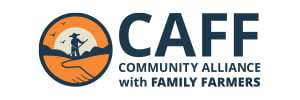All posts in Before: Land Management

Gully Stuffing
Gullies pose many threats to farmland, including the removal of fertile topsoil, damage to infrastructure, danger to livestock, and decreased water quality. Also, due to loss of protective vegetation, erosion […]

Earth, Fire, and Water
CAFF Sends Fellow to Fire Practitioner Training Last fall, CAFF’s Wildfire Resilience Program sent Josh Harjes, its resident Grizzly Corps fellow, to a Firefighter Type 2 training in northwestern Sonoma […]

Pile Burning on Working Lands: Siskiyou County
On a chilly March morning in Northern California, a group of ranchers, land stewards, and fire practitioners held an all day workshop on a land management practice called pile burning. Justin […]

Wildfire Community Preparedness Day 2023
Happy wildfire community preparedness day! Have you ever looked at your calendar and noticed there’s a holiday that you’ve never heard of before? Sure, there are the ones that are […]

Episode 3: First Rain Farm- Nevada City
In this episode, we travel to First Rain Farm in Nevada County, where Tim Van Wagner is integrating a number of effective wildfire preparation methods on his property, as well […]

Episode 2: Wild Oat Hollow Penngrove, CA
In this episode, Sarah Keiser of Wild Oat Hollow in Penngrove, CA describes her entry into ranching and how her love of the land positioned her to become a leader […]

Breaking Down Soil Compaction: Does It Increase Forage Production?
Maintaining a healthy and vigorous pasture should be a major objective of grazing management, but it should also be used as a tool for maintaining acceptable soil physical conditions.

Understanding Livestock Grazing Impacts from UC ANR
Information on the impacts of livestock grazing, presented in a comprehensive and accessible guide.

5 Key Wildfire Resilience Practices
It’s not always obvious that some of the ecological farming practices used frequently by farmers, also provide wildfire protection and recovery benefits. Check out the infographic below which was developed […]

Hooves & Hands How We Work Together to Stay, to Heal, and to Coexist in Fire Ecosystems Facing Climate Change
This book is an anthology of resilient communities telling their story of how they built collaboration with people and ruminants. Each one is told with a different voice, a different […]

Video: Hunter Grazing Cooperative Overview
This video details the work of Sarah Keiser and her efforts in Community Grazing Cooperatives.

Fire Is Family: A Conversation With The Yurok Tribe’s Cultural Fire Management Council
Tribal members Elizabeth Azuz and Margo Robbins join Farmer Campus’s Farmers Build Fire Resilience online course to share knowledge with producers learning to live with the repercussions of an intensifying wildfire […]

Sonoma Biochar Project
Biochar is a specialized form of charcoal that is produced by heating biomass using high heat (typically 350 C to 1000 C) in low-oxygen environments, and that is suitable for […]

Forest Management Handbook for Small-Parcel Landowners in the Sierra Nevada and Southern Cascade Range
A significant portion of Sierra Nevada and southern Cascades forests are owned and managed as small parcels (10 to 100 acres) by nonindustrial private landowners. This handbook is for such […]

Planned Herbivory in the Management of Wildfire Fuels
Grazing is most effective at treating smaller diameter live fuels that can greatly impact the rate of spread of a fi re along with the flame height. Wildfires are increasing […]

Fire-Resistant Plants for Landscapes
As homeowners continue to build in the wild and urban interface, they must take special precautions to protect their homes. One way to do this is to create a defensible […]

A Land Manager’s Guide for Creating Fire-Resistant Forests
This publication provides an overview of how various silvicultural treatments affect fuel and fire behavior, and how to create fire-resistant forests. In properly treated, fire-resistant forests, fire intensity is reduced […]

Landscape Debris Burning Safety
During certain times of the year and in certain parts of the state, residential landscape debris burning of dead vegetation is allowed. However, homeowners should always check with their local fire […]

Creating Wildfire Adapted Homes & Landscapes
What Can Be Done to Reduce Structure Loss from Wildfire? Treating the Vegetation: Defensible Space. Protecting Homes through Better Design and Materials. Defensible Space as Management Zones. Can the Fire […]

Fire Forward: Building Ecosystem Resilience Together
Fire Forward, a program of Audubon Canyon Ranch, brings a unique blend of science-based program design and community organizing as it seeks to become a model of fire-adapted communities tending […]

Wildfire & Rangeland Management: Mediating Impacts to Conservation & Ranching
A series of presentations from California ranchers, technical advisors, and researchers on wildfire risk management in rangelands. From the California Rangeland Conservation Coalition.


